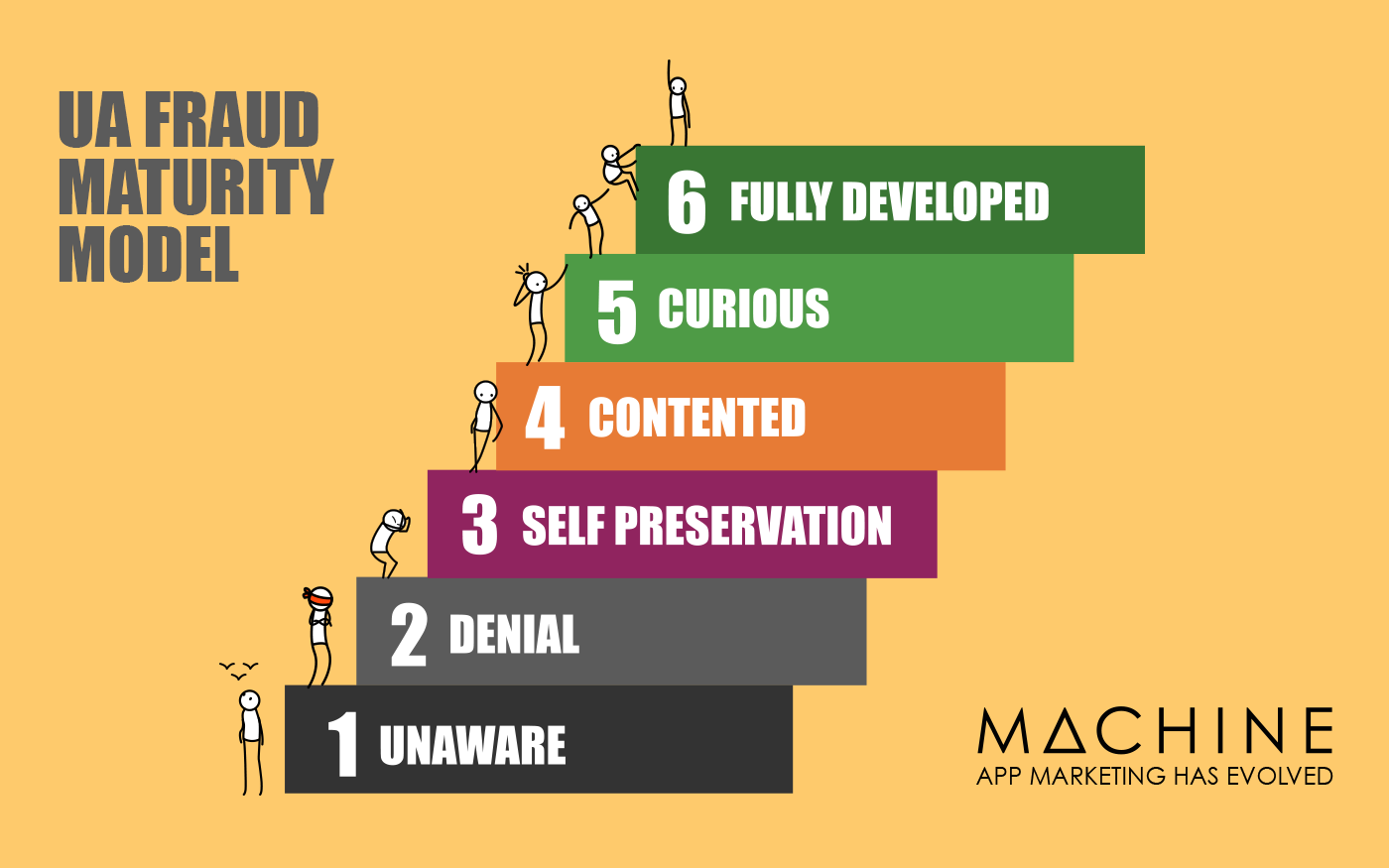After a number of years in the UA fraud space, I’ve come to recognise a well defined set of repeating personas when speaking with UA marketers. By understanding them, we gain insight into where the individual or team is in their maturity when dealing with the problem of UA fraud.
From this insight, we’ve found we’re able to support them more effectively on their journey to performance and growth. Knowing these personas is important for understanding team dynamics, so we created the UA Fraud Maturity Model. If you’d like to go a bit deeper, there’s some useful resources included at the end.
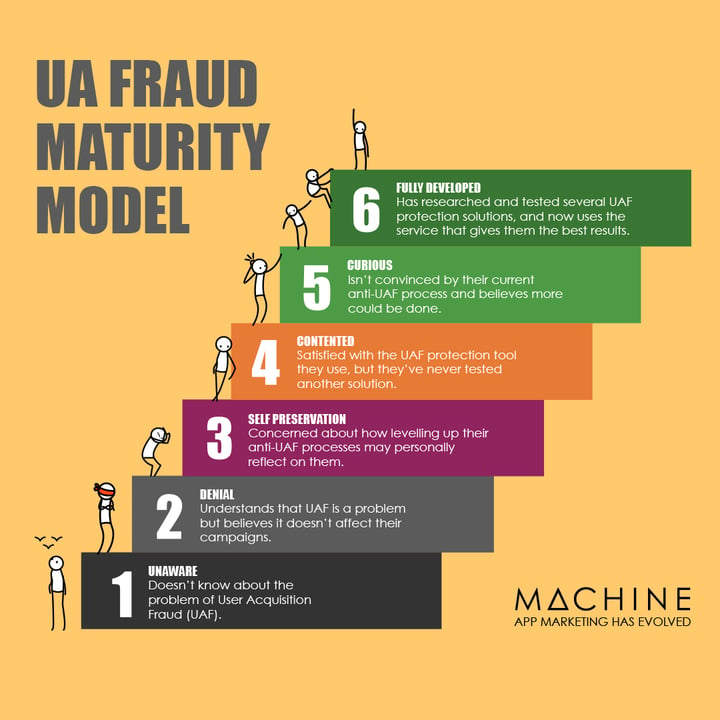
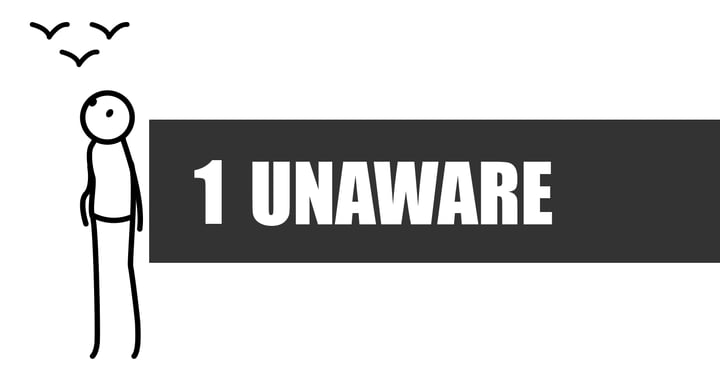
#1: Unaware doesn’t know about the problem of UA Fraud (UAF).
The least common, but surprisingly they still do exist. This persona is simply not aware of the problem at all, even though they’re responsible for marketing an app.
The good news is they’re often open to learning, so once they understand the problem and get the right advice, they leapfrog all other maturity stages to become Fully Developed (No.6). They can do this because they haven’t been on the same journey as the others, and so have avoided the associated thought traps.
This Install Fraud by Numbers infographic can help raise awareness.

#2: The Denier understands that UAF is a problem but believes it doesn’t affect their campaigns.
They believe it doesn’t affect their campaigns because they don’t fully understand UA Fraud and think that it doesn’t drive performance. It’s logical thinking; how can something fake like fraudulent installs or users give a positive ROAS?
What the Denier doesn’t understand is that most UA Fraud is a type of attribution fraud. When conversions of real users get wrongfully attributed to publishers who had nothing to do with them, quite often, it’s the organics that are misattributed. The Denier may slowly come to an understanding, but unfortunately can also quickly develop into the “Self Preservation” persona.
More about attribution theft can be found in Attribution Fraud 101.
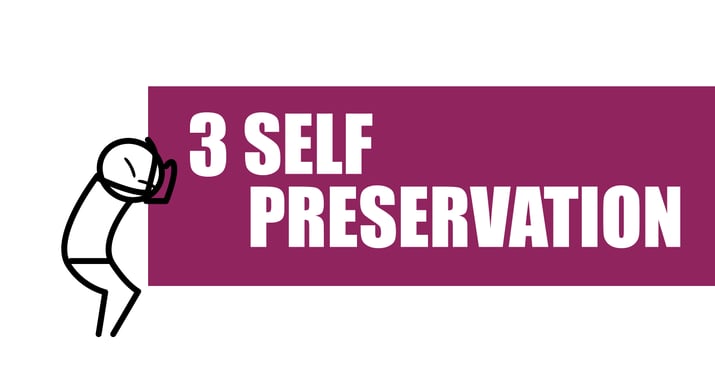
#3: Self Preservation personas are concerned about how better anti UAF processes and tools may personally reflect on them.
Arguably the most important to understand. The root cause of Self Preservation thinking is more emotional than logical. They are aware of the problem of UA fraud and even suspect it has a more significant impact than their current anti-fraud processes may suggest. However, this concern is competing with their own personal livelihood and reputation.
In the mind of a Self Preservation persona, improving the anti-UA fraud processes may bring to light some uncomfortable truths, and it’s easy to sympathise with their dilemma. UA teams are responsible for large budgets, often millions of dollars every month. Put yourself in their shoes, and then, suppose one day you were presented with data that showed the budgets you were responsible for had been wasted on UA Fraud. In that case you’d probably feel accountable and would want to avoid anyone knowing, especially your boss.
The easiest way to avoid this from happening, is for them to block any suggestion of testing a new service. There are a number of ways for them to do this, and the most common response is to push back because they “already use a good service” - often an MMP anti-fraud add-on. Alternatively, if a test does go ahead, this personality will resist any new fraud insights.
There are multiple scenarios in which we meet the Self Preservation personality - not just in the UA team - and their biggest problem is that they feel responsible for being conned and worry about the consequences. However, finding the problem and fixing it should be praised. After all, it's good business practice to improve processes and results.
Recommended reading:
Placebo installs are an easy pill to swallow
The real cost of your fraud tool in 60 seconds for Gaming, Gambling, or Health & Fitness
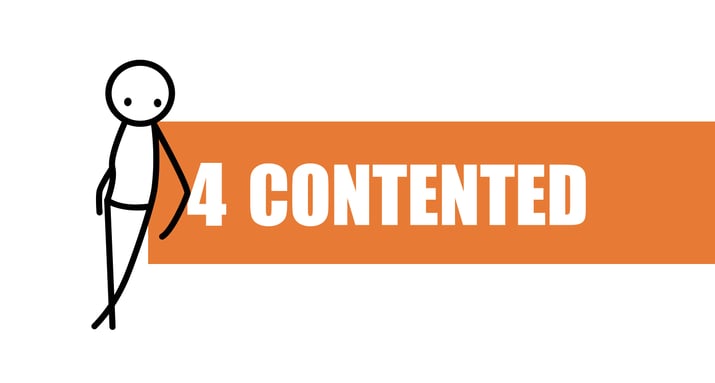
#4: Contented personas are satisfied with the UAF protection tool they use, but they’ve never tested another solution.
They utilise an app marketing fraud protection tool, usually the convenient MMP tool. It shows them they are catching some UA fraud, so in the busy world of UA management this generates a feeling of satisfaction that it’s doing a sufficient job. Fraud prevention is a complex area, so with this satisfying box ticked it can feel unnecessary to them to commit to the extra workload of testing alternative solutions.
Recommended reading:
The real cost of your fraud tool in 60 seconds for Gaming, Gambling, or Health & Fitness
Find out more detail in this full case study

#5: The Curious persona isn’t convinced by their current anti UAF process and more could be done.
They are committed to fighting UA fraud and believe that whilst they have a solution in place, more could still be done to improve results. Being Curious, they are open to investigating options to ensure that they are doing the best possible job and that no marketing budget is being wasted on UA Fraud. The Curious are on the right path to reaching the final, most mature state.

#6: The Fully Developed persona has researched and tested several AMF protection solutions, and now uses the service that gives them the best results.
They are committed to stopping UA fraud to bring clarity to their metrics. They have carried out research into fraud protection solutions before choosing the platform that best protects them from all methods of UA fraud. They are invested in the fight against fraud and take a zero-tolerance approach.
Team Dynamics
Things get interesting when a team varies in maturity by combining two or more of these individual personas. Leaders and project managers should carefully consider which persona types are in their team and select a Curious or Fully Developed persona to lead projects that evaluate a fraud prevention service.
If other personas display behaviours that may compromise the project, then leadership backing and support may be required to ensure the business obtains the best value from the effort committed.
This Install Fraud by Numbers infographic can help raise awareness.
More about attribution theft can be found in Attribution Fraud 101, and fraud that looks real in Placebo installs are an easy pill to swallow
The real cost of your fraud tool in 60 seconds for Gaming, Gambling, or Health & Fitness. Find out more detail in this full case study
If any of this sounds familiar and you’d like to have a 20-minute call to discuss your case in confidence, use this link to book a meeting.


